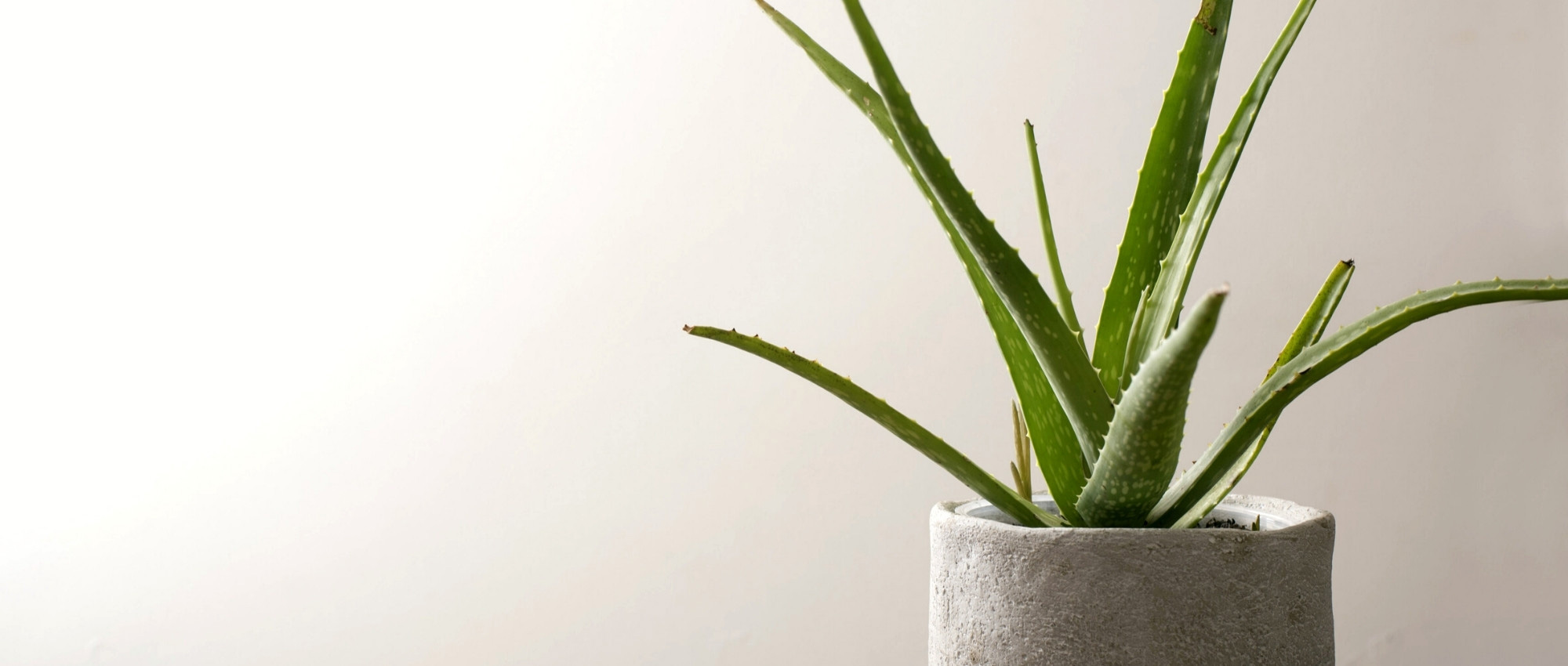
Growing an Aloe vera in a pot and caring for it properly
All about growing aloe vera in pots
Contents
Aloe vera is a lovely succulent that forms rosettes of very graphic evergreen leaves. Originating from Africa, Madagascar, and the Arabian Peninsula, this frost-sensitive plant is ideally grown in pots in our climates, whether indoors, under a veranda, or outside in the mildest regions. Planting an aloe vera in a pot allows you to enjoy its decorative qualities while protecting it from the cold. Planting an aloe vera in a pot is therefore an excellent solution for growing it outside Mediterranean regions. Choosing a pot for aloe vera, a good potting mix for aloe vera, and well-drained soil is essential for successfully growing aloe vera in a pot. A drought-resistant plant, it adapts well to pot life while requiring little maintenance. Discover in this guide all our tips for successfully planting aloe vera in a pot!
→Discover our entire range of Aloes
Which aloe vera for pot cultivation?
Aloes are a vast genus of succulent plants, among which is Aloe vera, the most well-known species for its medicinal uses. All belong to the Asphodelaceae family and form rosettes of evergreen leaves, often very graphic and decorative. For pot planting, it is advisable to choose the smaller varieties. Some species, such as Aloe arborescens or Aloe striatula, develop a bushy or shrubby habit and can reach considerable sizes, so avoid them unless you have a large conservatory or greenhouse. For pot cultivation of aloe vera, we particularly recommend the following varieties:
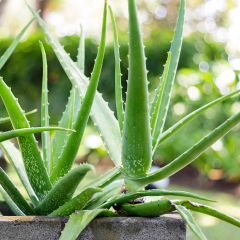
Aloe vera
- Flowering time August, September
- Height at maturity 60 cm
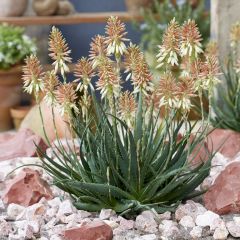
Aloe Safari Sunrise
- Flowering time July to October
- Height at maturity 30 cm
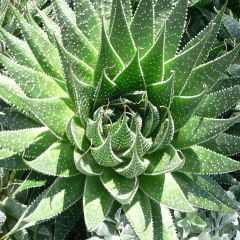
Aloe aristata
- Flowering time July, August
- Height at maturity 30 cm
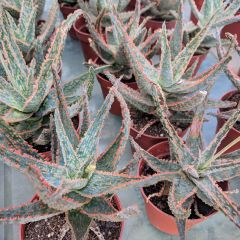
Aloe x rauhii Cleopatra
- Flowering time February, March
- Height at maturity 20 cm
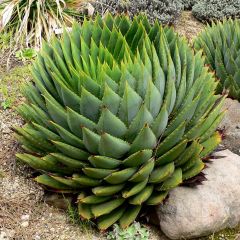
Aloe polyphylla
- Flowering time July, August
- Height at maturity 30 cm
Read also
Aloes: planting, growing and careWhat pot for aloe vera?
We advise you to choose a terracotta pot. This type of pot has the advantage of facilitating drainage and aeration of the root ball, as it is permeable to water and air, and better regulates temperature than plastic pots. Make sure that the pot has drainage holes at the bottom to allow water to escape; otherwise, the roots may rot. Choose a pot that is wide enough, but not necessarily very deep. The pot should measure at least 20 cm in diameter, or more depending on the size and age of your Aloe. As it grows, you will repot it into a pot that is slightly larger than the previous one each time.
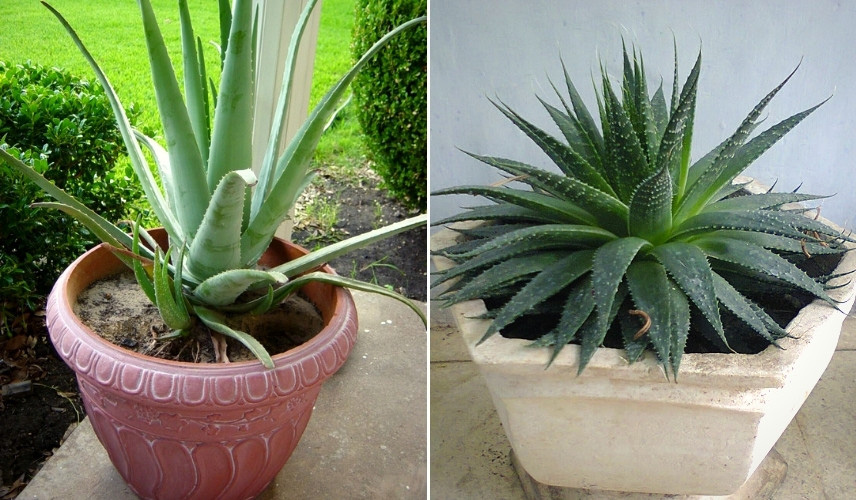
Different types of pots are suitable for growing Aloes, but choose one that is large enough, preferably terracotta. On the left, Aloe vera, and on the right, Aloe aristata (photos: brykmantra / Ultima.ramza)
Discover other Aloe
View all →Available in 1 sizes
Available in 1 sizes
Available in 1 sizes
Available in 1 sizes
Available in 2 sizes
Available in 1 sizes
Available in 3 sizes
Available in 1 sizes
Available in 1 sizes
Available in 1 sizes
What soil for aloe vera?
The ideal compost for aloe vera must be perfectly draining, with a sandy or gravelly texture. This allows for better water runoff and aeration, preventing the roots from rotting. Aloes naturally grow in arid soils, which are often poor and lacking in mineral elements. For example, choose cactus compost, or create a mixture composed of 1/3 compost, 1/3 garden soil, and 1/3 coarse sand. You can also add a bit of pumice to the mix.
Read also
Choosing an Aloe for your gardenHow to pot Aloe vera?
We recommend planting Aloe in a pot in spring.
- Take the pot and place a shard of pot over the drainage hole to prevent the substrate from escaping, then add a small layer of gravel, pumice, or clay balls to facilitate drainage.
- Fill the pot with a draining substrate, for example, a mix of potting soil, garden soil, and sand.
- Place the Aloe plant in the centre of the pot.
- Fill the pot by adding substrate around the Aloe. Be careful not to bury the collar or the lowest leaves.
- Lightly compact the substrate.
- Water.
- You can add a small layer of gravel or clay balls on the surface.
- All that’s left is to place the pot in a bright location (avoid direct sunlight for Aloe vera).
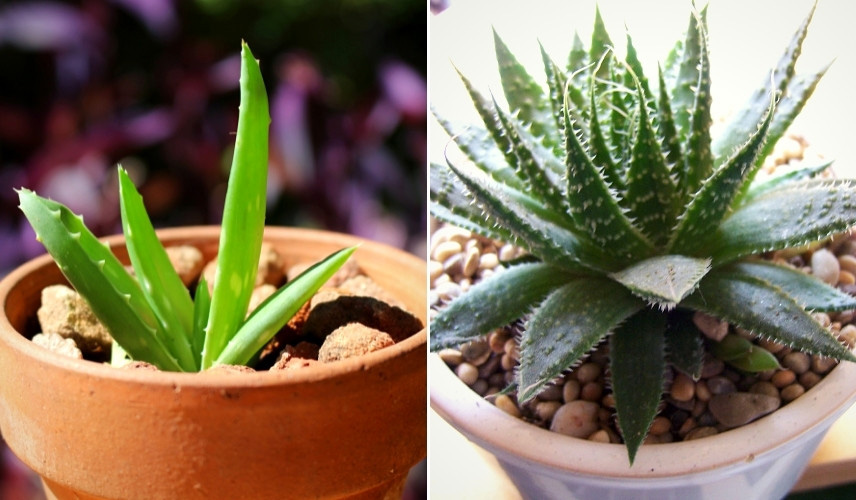
Feel free to add a small layer of clay balls or gravel on the surface of the potting soil. Aloe vera, and Aloe aristata (photo Stephen Boisvert)
Where to place Aloe?
Don’t hesitate to take your potted Aloe vera outside on the terrace or balcony during summer, but avoid direct sunlight for the Aloe vera (its leaves may turn brown!). For other species, gradually acclimatise them to the sun. For example, place them in partial shade for a week or two before moving them into full sun.
As soon as temperatures cool in autumn, bring the Aloe indoors to protect it from the cold.
Indoors, Aloes prefer a temperature of around 20 °C and need slightly cooler temperatures in winter (10 to 15 °C). It’s best to avoid letting the temperature drop below 5 °C.
Aloes are unlikely to flower when grown indoors. Taking them out onto the terrace in summer will encourage their flowering.
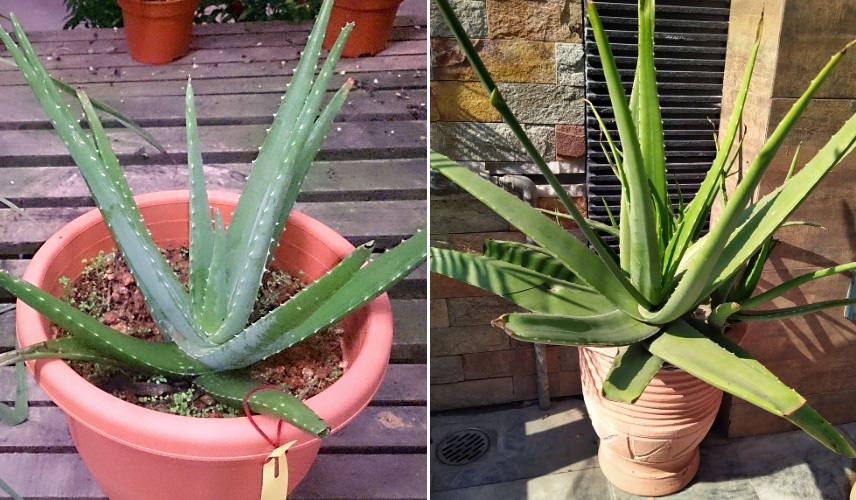
In summer, you can take the Aloe outside, for example on your terrace. Here, two Aloe vera plants (photos: Mokkie / Tahir mq)
Caring for an Aloe Vera
-
Watering and Fertilising
Aloes store water in their fleshy leaves, making them drought-resistant. They do not require much watering. We recommend watering once a week or every 15 days in spring and summer, then reducing watering in autumn and winter (about once a month). Always wait until the substrate is completely dry before watering, as Aloes are sensitive to stagnant moisture, which can cause their roots to rot. Similarly, do not let water accumulate in the saucer! Empty it after each watering.
You can apply a little fertiliser in spring and summer, but no more than once a month. This will help it grow and flower, but do not overdo it; Aloe does not need much fertiliser and naturally grows in rather poor soils. Choose a special cactus fertiliser, low in nitrogen.
-
Diseases and Pests
Aloes are sometimes attacked by mealybugs. You will notice them by the presence of small cottony white clusters. These tiny insects feed on the sap and weaken the plant. You can eliminate them with a cloth soaked in 90° alcohol, or spray the foliage with a solution made from one litre of water in which you dilute 1 teaspoon of black soap, 1 teaspoon of methylated spirits, and 1 teaspoon of vegetable oil.
Aloes can also be affected by aphids. We recommend eliminating them by applying a solution based on black soap (15 to 30 g of black soap per litre of water). Avoid using chemical products, especially if you wish to use the leaves of Aloe vera!
-
Repotting
Repot the Aloe in spring, ideally every two to three years. This allows you to refresh the soil for aloe vera and give it a bit more space to grow. Each time, choose a pot that is slightly larger than the previous one, and plant in well-draining substrate.
Finally, if you notice that your Aloe has produced offsets around the original plant, you can take the opportunity during repotting to divide them.
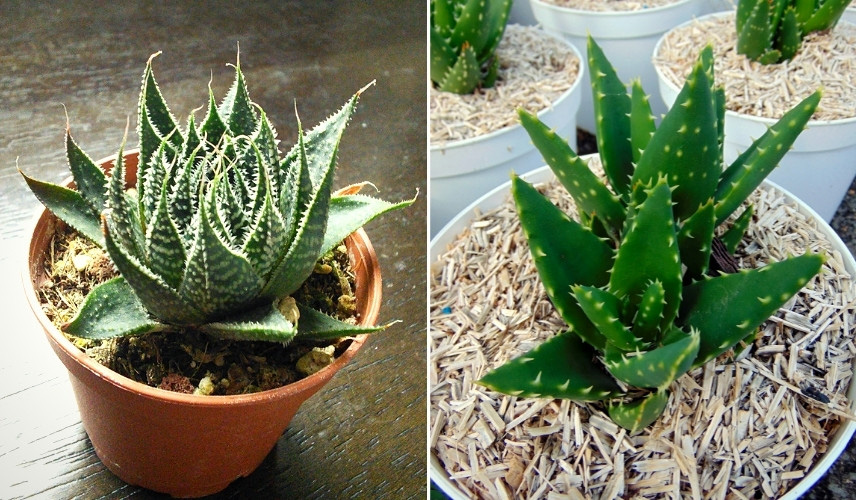
Aloe aristata (photo stephen boisvert) and Aloe brevifolia
- Subscribe!
- Contents
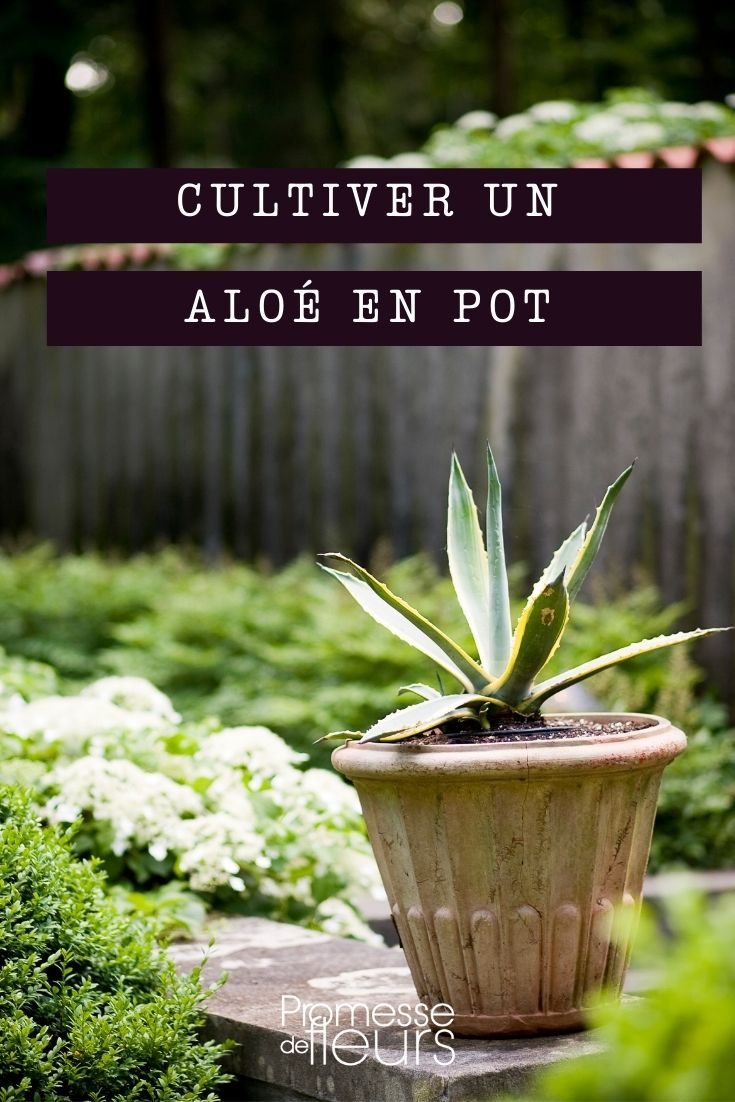































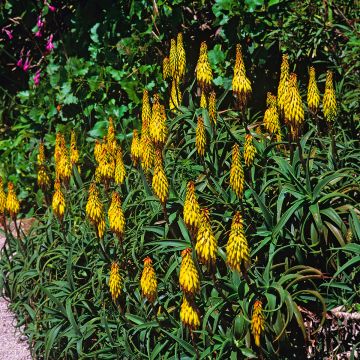
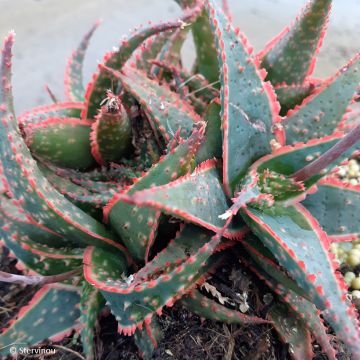
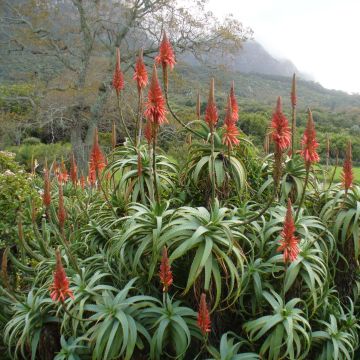
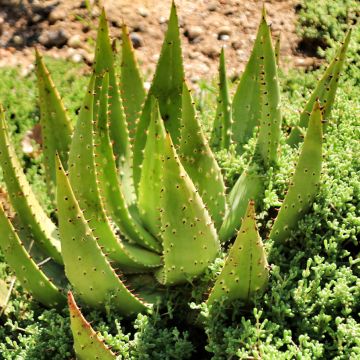

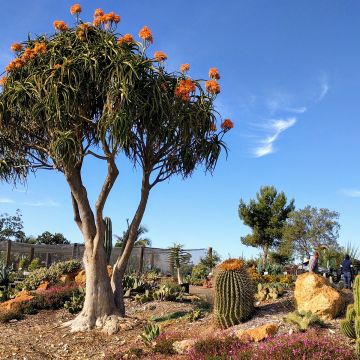

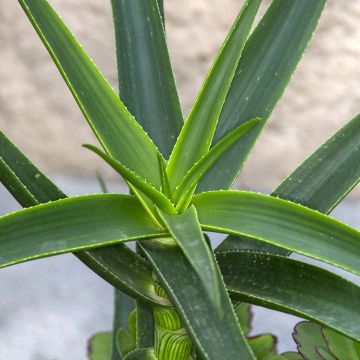
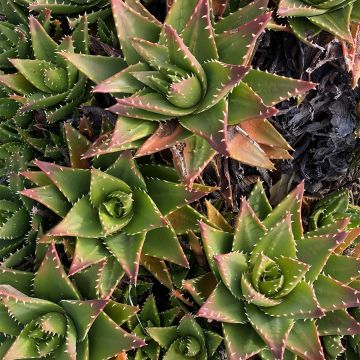

Comments